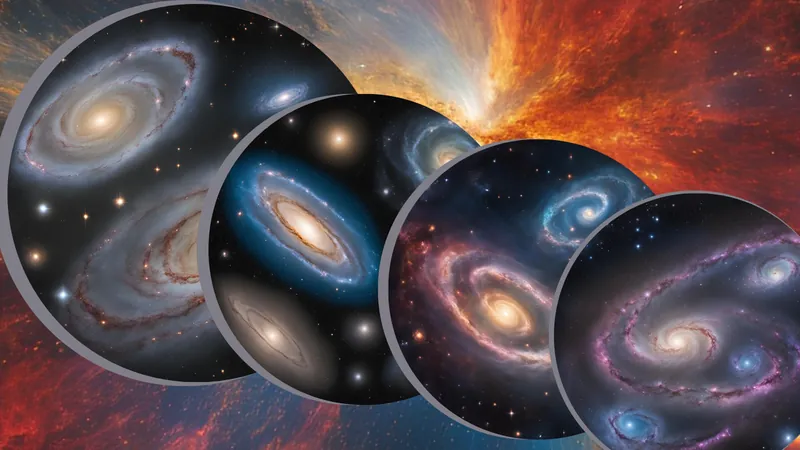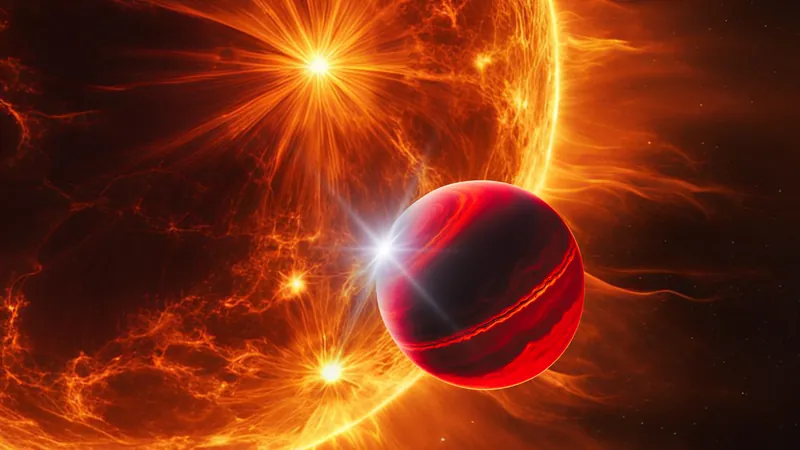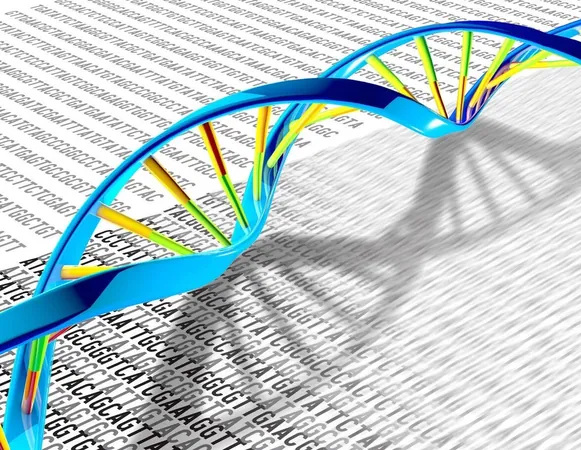
Revelation from the Cosmos: A Groundbreaking 'CT Scan' Unveils the Universe’s Surprising Complexity!
2025-01-28
Author: Jia
A Groundbreaking 'CT Scan' Unveils the Universe’s Surprising Complexity!
In a stunning advancement for astrophysics, researchers have harnessed the power of two distinct astronomical surveys to create an extraordinary "cosmic CT scan" that unveils the universe’s evolution in unprecedented detail. This monumental breakthrough allows scientists to look deeper into cosmic history, revealing that the universe is far more intricate than previously believed.
Using the sixth and final data release from the Atacama Cosmology Telescope (ACT) combined with Year 1 data from the Dark Energy Spectroscopic Instrument (DESI), the research team has effectively created layered cosmic images, reminiscent of stacking photographs to capture the passage of time across the vastness of space. According to Mathew Madhavacheril, a researcher at the University of Pennsylvania, this methodology is akin to seeing through slices of cosmic history, providing invaluable insights into how gravity has sculpted the universe over approximately 13.8 billion years.
Following the Trail of Ancient Light
To embark on this cosmic journey, scientists turned to light that has been traveling across the universe since its infancy. This ancient light, known as the Cosmic Microwave Background (CMB), offers a view into the universe’s early stages, shortly after the Big Bang. "The ACT, which surveys roughly 23% of the sky, captures this faint light, allowing us to glimpse the universe's baby picture — a moment when it was merely 380,000 years old," explained Joshua Kim, a graduate researcher involved in the project.
The CMB represents remnants of light from an era that followed the Big Bang when the universe had expanded sufficiently to form the first neutral hydrogen atoms. This moment, called "last scattering," marked the transition of the universe from an opaque entity to a transparent one, allowing light to travel boundlessly.
Although often termed a "cosmic fossil," the CMB has evolved as the galaxy expands, with its photons stretching into longer wavelengths and losing energy over time. Today, this ancient light exists at a frigid temperature of about -454°F (-270°C). The study of gravitational lensing—a phenomenon where massive structures like galaxy clusters warp the fabric of spacetime—further reveals how this primordial light has altered during its cosmic journey.
Mapping the Universe's Structure
While the ACT provides a glimpse into the universe's early epochs, DESI offers a contemporary perspective by mapping the three-dimensional arrangement of millions of galaxies, particularly luminous red galaxies (LRGs). By examining these galaxies, researchers can reconstruct the historical distribution and growth of cosmic structures.
"The LRGs act as markers, enabling us to visualize the universe's growth from the initial CMB map to how galaxies are sprawled across space today," Kim stated. This combined analysis of ACT and DESI data creates a comprehensive cosmic photo album that captures the transformation of the universe from infancy to its current state.
However, a puzzling discrepancy emerged—the "clumpiness" of matter observed in recent cosmic history did not align with theoretical predictions. Although this observation doesn't suggest the need for new physics, it indicates that the evolution of cosmic structures may have slowed down in ways current models struggle to capture. Madhavacheril noted, “While the core narrative of structure formation largely agrees with Einstein’s predictions, we detected a curious disparity in the expected clumpiness of matter around four billion years ago, warranting further exploration.”
The Next Frontier in Cosmic Research
The researchers are excited to continue investigating these discrepancies using next-generation telescopes, which promise to deliver even more accurate measurements. As they dive deeper into the cosmic past, scientists are on the cusp of unveiling secrets that could redefine our understanding of the universe.
This groundbreaking study not only showcases the complexities of our cosmos but also poses a tantalizing question: What other surprises lie hidden in the vast expanse of space? Prepare for a transformative era of cosmic exploration as we aim to unravel the mysteries of the universe.




 Brasil (PT)
Brasil (PT)
 Canada (EN)
Canada (EN)
 Chile (ES)
Chile (ES)
 Česko (CS)
Česko (CS)
 대한민국 (KO)
대한민국 (KO)
 España (ES)
España (ES)
 France (FR)
France (FR)
 Hong Kong (EN)
Hong Kong (EN)
 Italia (IT)
Italia (IT)
 日本 (JA)
日本 (JA)
 Magyarország (HU)
Magyarország (HU)
 Norge (NO)
Norge (NO)
 Polska (PL)
Polska (PL)
 Schweiz (DE)
Schweiz (DE)
 Singapore (EN)
Singapore (EN)
 Sverige (SV)
Sverige (SV)
 Suomi (FI)
Suomi (FI)
 Türkiye (TR)
Türkiye (TR)